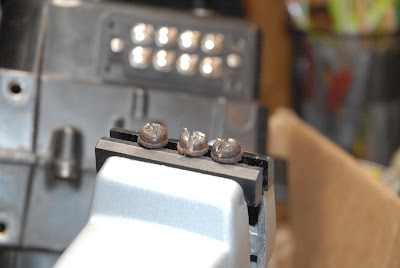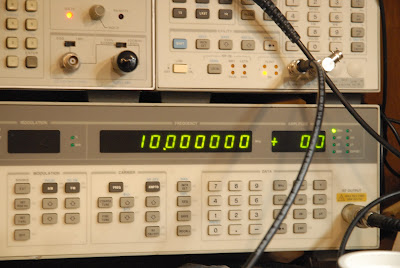Many of you have a Shortwave receiver, but how often do you use it? Or, have you ever used it? Well, this would be a good time to get it out, read the manual, and get some practice. Believe me, when TSHTF is no time to learn how, and you should get comfortable with it before then.
First, let's cover some storage aspects.
If it uses batteries, NEVER store it for any length of time with the batteries in it! Same with any battery powered GPS units, or walkie-talkies you may have. If you're worried about The Dreaded EMP, keep the radio, charger/"wall wart" if it has one, and a pack of batteries in a steel ammo can. If you're really paranoid, then tape the seams closed with some adhesive backed, aluminum foil tape, like that used for HVAC ducting. You do not want generic "Duct Tape", as it has a fabric backing. You need something like this, readily available at home improvement stores. You don't a $1000 Mu Metal "EMP Case" like some places are selling. A galvanized steel garbage can, with the lid sealed down as above, is adequate, and has a lot of room in it. Oh, one other thing about the whip antennas commonly used on small, portable SWL sets. NEVER push it down to close it from the top! You'll bend the whip 90% of the time, which at least, is maddening. Telescope it back down using the largest sections, and then carefully push the top section in.
Next, how to use it?
Well, as the computer guys say, RTFM. You have to know how to turn it on, select the Shortwave frequency bands, and tune it. It may or may not have some additional functions, like an attenuator, usually a switch marked "Local/DX", a "Mode Select" to listen to to Single Sideband, AM, or FM. The better ones will have a "Wide/Narrow" selectivity setting, and possibly a Noise Blanker, or some kind of "Noise Reduction" function. Get to know how to use them, and try and get a rough understanding of what they do. Print out the chart of frequency bands from the above Wiki link, and keep a copy or two with the radio. A very good reference book to have is the World Radio TV Handbook, which has all you need to know about specific frequencies. HIGHLY recommended!
In case of TL;DR, here's the chart:
The chart also gives time of day and time of year for "best" reception on the listed bands. A good way to start, is to tune in the signals from WWV, on 2.5, 5.0, 10.0, 15.0 and 20.0MHz. If you can't hear WWV in the CONUS, 24 hours a day, frequency dependent, then you have some problems beyond this brief post.
So what else is out there besides The Tick?
Well, things have changed quite a bit since I started listening waaay back in 1961 when my Dad bought me my first Shortwave Receiver! I didn't have a Hallicrafters radio then, but I sure remember this:
Yes, Radio Havana is still active, along with the BBC World Service, China Radio, and quite a few Religious broadcasts with everything from Fire and Brimstone, to Bible Study and Discussion programs.
For other references, the Wikkipedia has good general knowledge sections, and there's a wealth of SWL, and HF Comms info on the Web.
Radio Reference is a site I belong to, and is highly recommended. I'll add it to the side bar for easy look up.
So get those radios out, and learn how to use them!




































